Following the tourist trail
Uyuni is famous for its Salar, and therefore there are plenty of agencies offering tours of it. We wanted to cycle it, so we were not interested. However, we would like to see the colored lagoons. In the corner between Bolivia and Chile there are quite a few high altitude lakes, most in different colors due to the algae living there, and also with plenty of flamingos, all surrounded by big peaks, volcanoes, geysers and the occasional thermal baths.
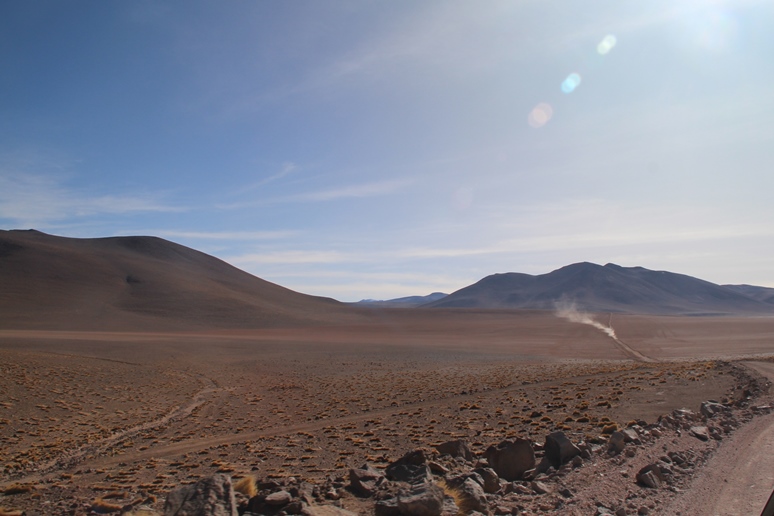
Many cyclists take the route through the lagoons to Chile. But we are not going to do it as the route is extremely challenging, with sandy tracks, no water, and high altitude passes with strong winds. Not what you want to voluntarily face when you are pulling a trailer with 40 kilos of kids.
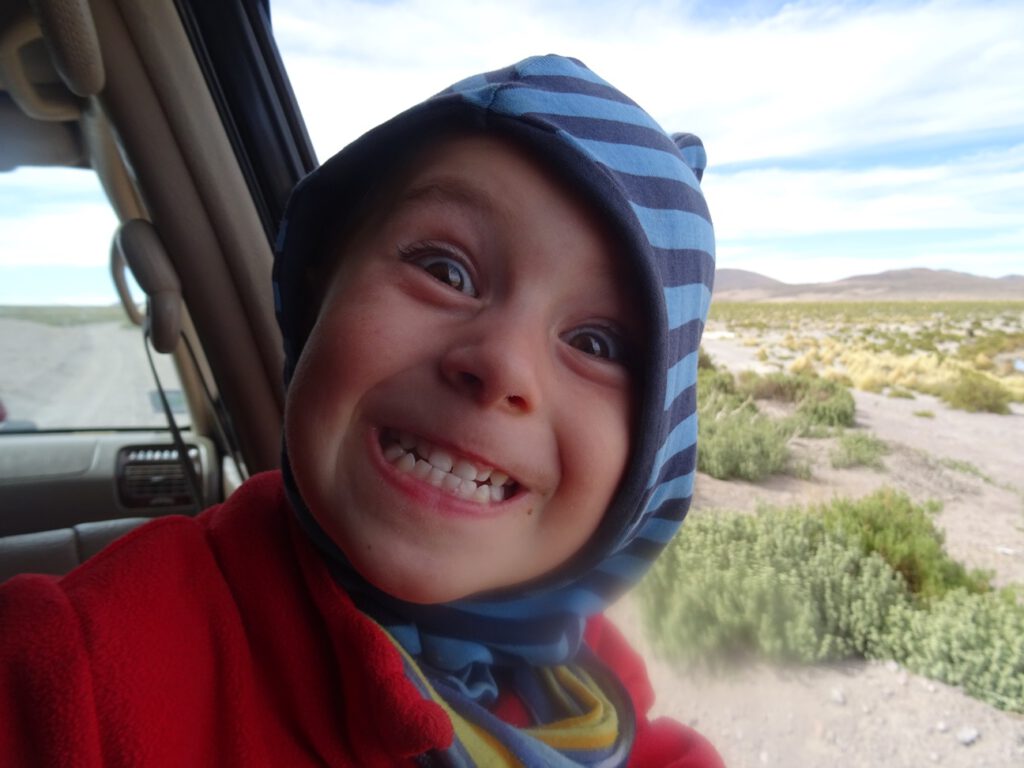
We booked instead a jeep tour for a decent price thanks to the low season that we are in. It would not only take us to the lagoons but also to the Salar, but there was no way to exclude this part to make it cheaper. No big deal though, we would still cycle to the Salar.
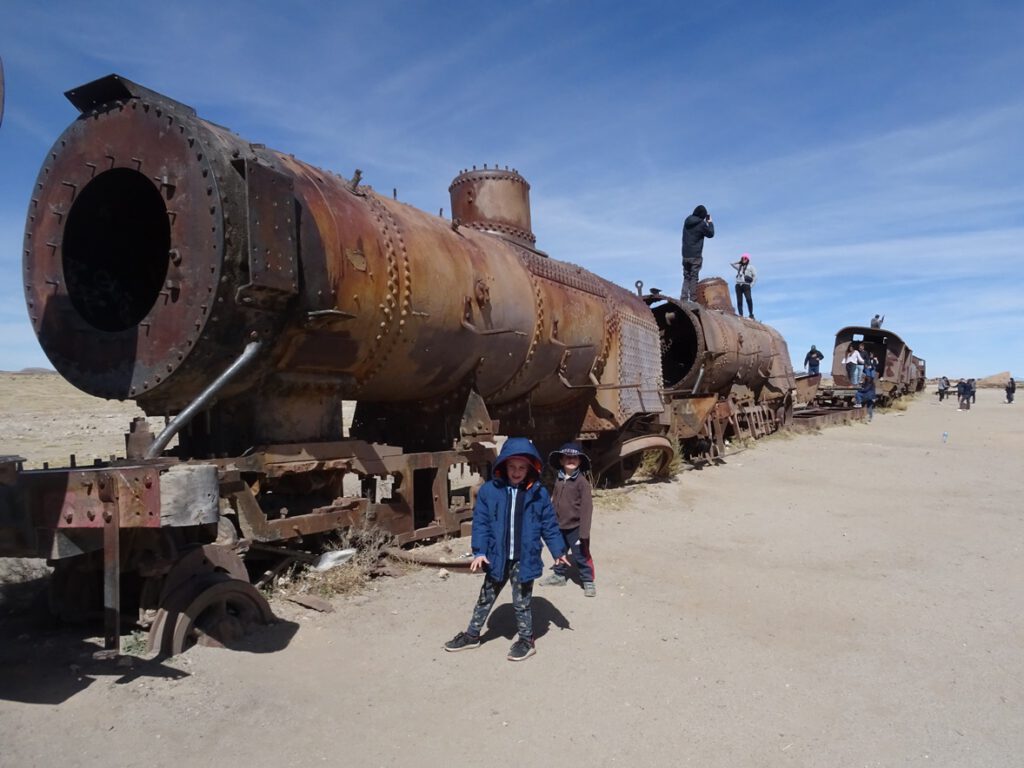
The tour itself is totally recommended. We were joined by 2 French guys and a French girl so that we would fill all the seats in the jeep. First we went to visit the train cemetery outside Uyuni. In former times Uyuni was a huge communication hub, with trains going to Argentina (the one we took to come here) and to Chile. Now, the Argentina one ends in Villazon, at the border, while the Chilean one only works irregularly and the tracks are in terrible condition. It is hard to understand how Bolivia is claiming free access to the coast, while letting the train that would bring goods easily from the coast die a slow death. Instead, hundreds of trucks needing expensive petrol and destroying the roads do this journey nowadays.
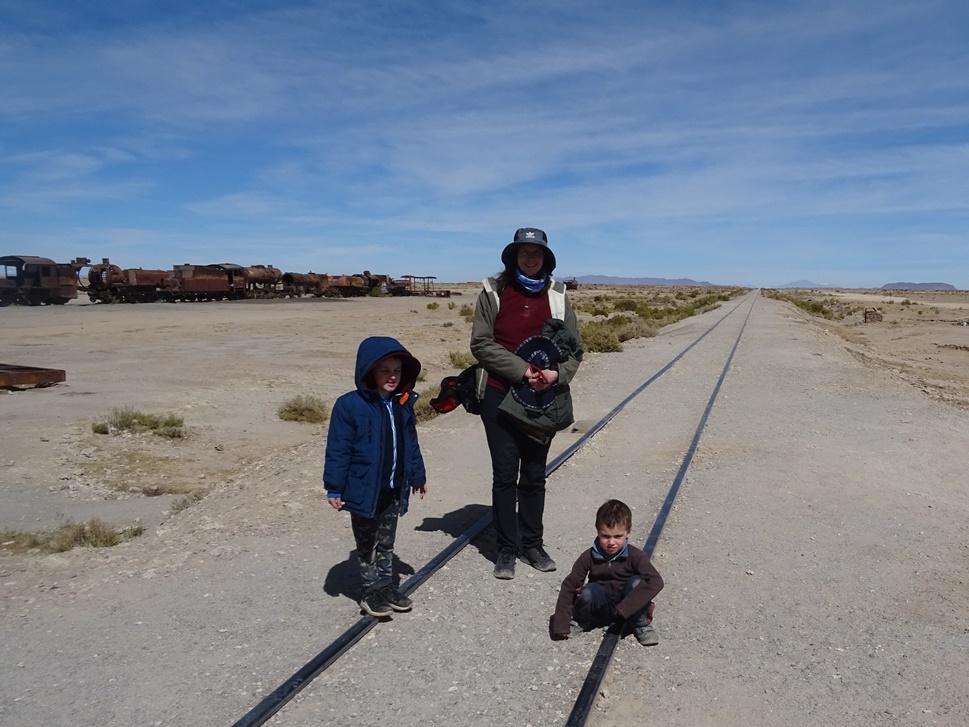
Anyway, the train cemetery is what the name suggests, a place where old trains have been parked after their time was up. There are many interesting machines, all with steam motor, rusting away with the desert wind. After that we finally went to the Salar. The main entrance is in Colchani, just 30 km away. We saw a few vicunas on the way. Just before the entrance, Marino our guide dropped us in a souvenir shop with different little figurines made out of salt. We then did a tour of a small salt factory, and finally we had lunch in a room where everything from walls to chairs and table were made out of salt.
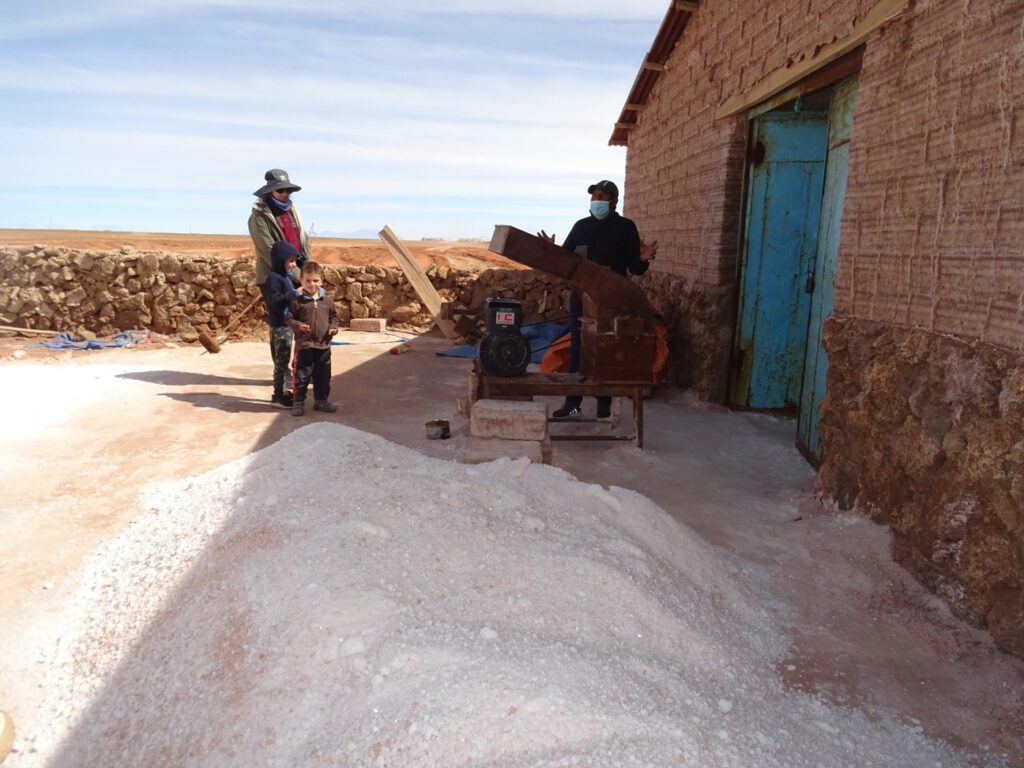
Afterwards we entered the Salar. The kids were amazed as, although we had explained several times what we were going to see, they could not imagine it. We stopped first in a place called “the eyes of the Salar” to see how the air trapped in the water layer below the salt comes out. We then drove another 12 km to the famous Salt Hotel, built about 10 years ago but now closed due to lack of license, and which now only works as bar and restaurant.
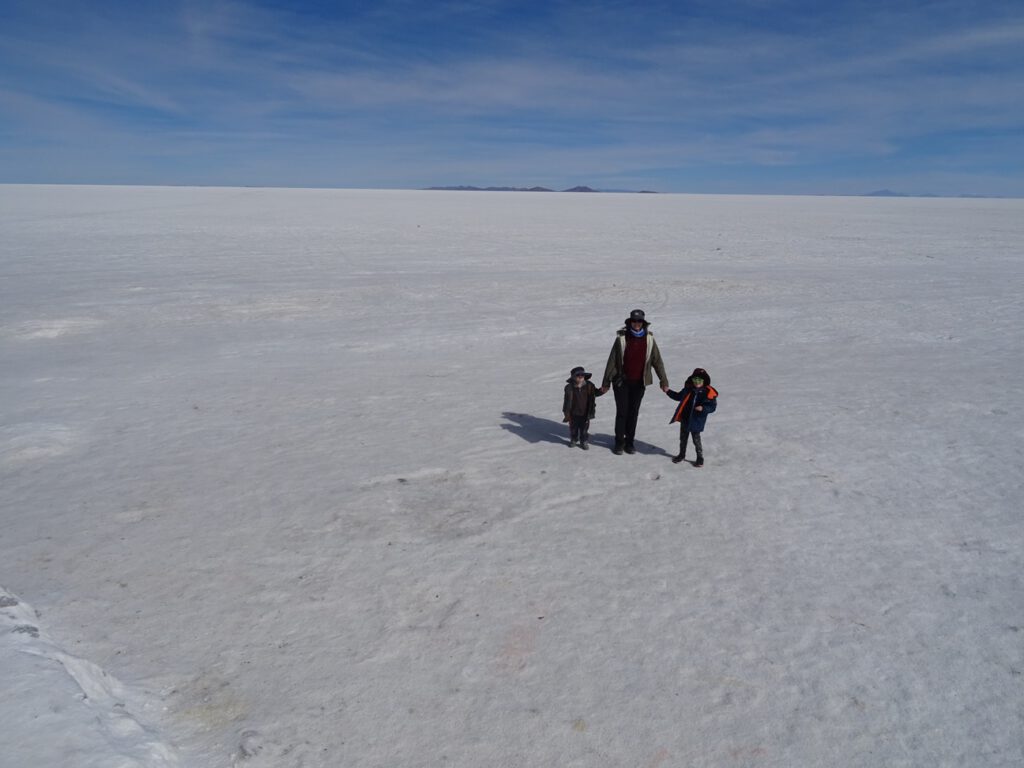
They built there a statue commemorating the time the Dakar rally passed by, and there is also a flag square where we all took our pictures. Susanne even found one from Bavaria, but none from Germany.
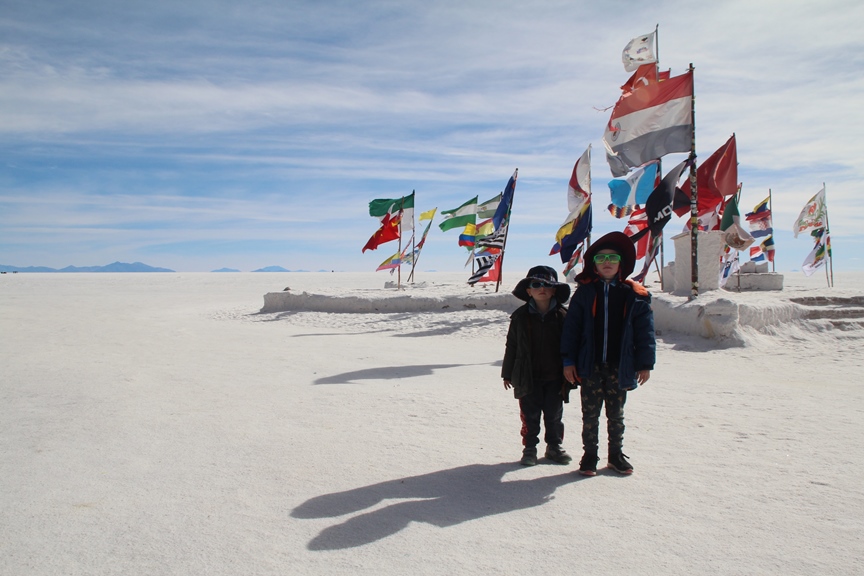
After that there was a tedious drive to he Incahuasi island, a small bit of land sticking out of the salt nearly in the middle. Although the views on the way were great, the continuous vibration and noise in the jeep made it not so pleasant. Thomas fell sleep while we all climbed the island to get a view from above.
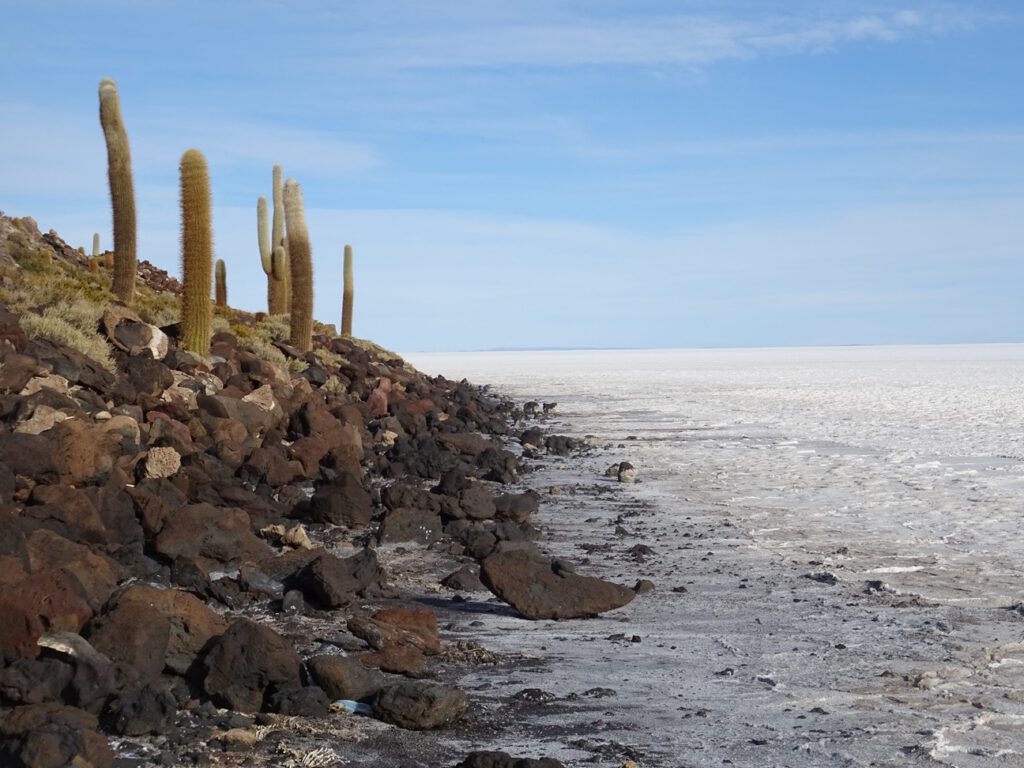
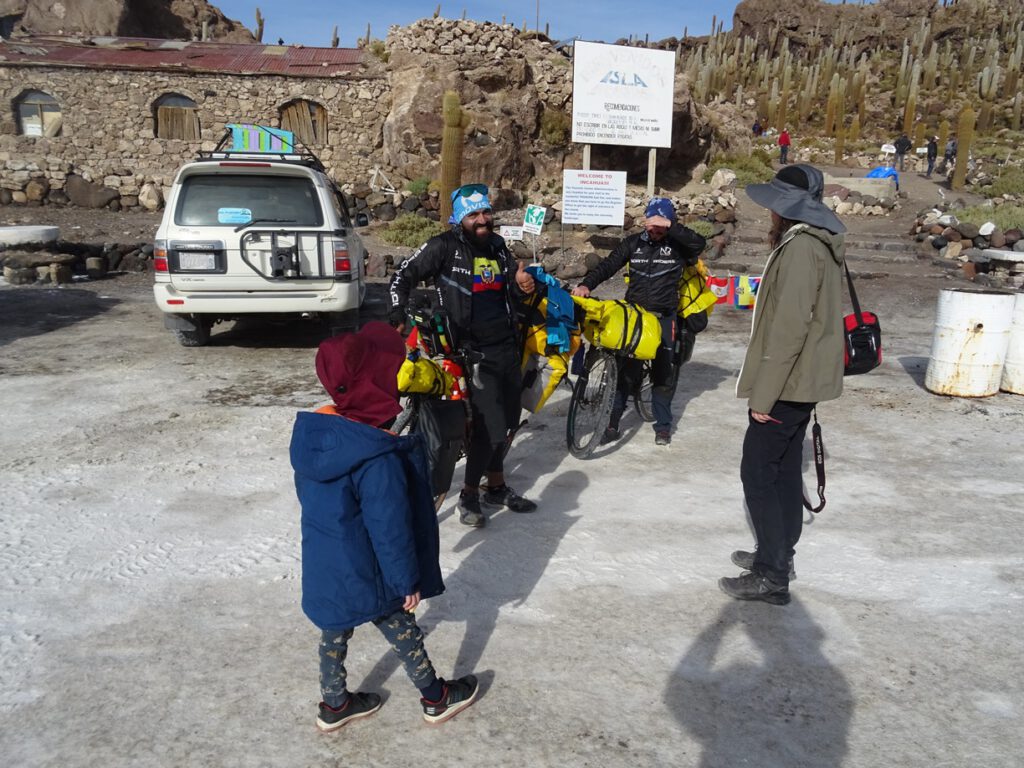
We now left the Salar by Colcha K, where the water lasts a bit longer than in other parts so you could see great reflections of the surrounding mountains and of the sunset. After a skillful drive in the dark on terrible dirt roads, we arrived at our hostel, also made completely of salt.
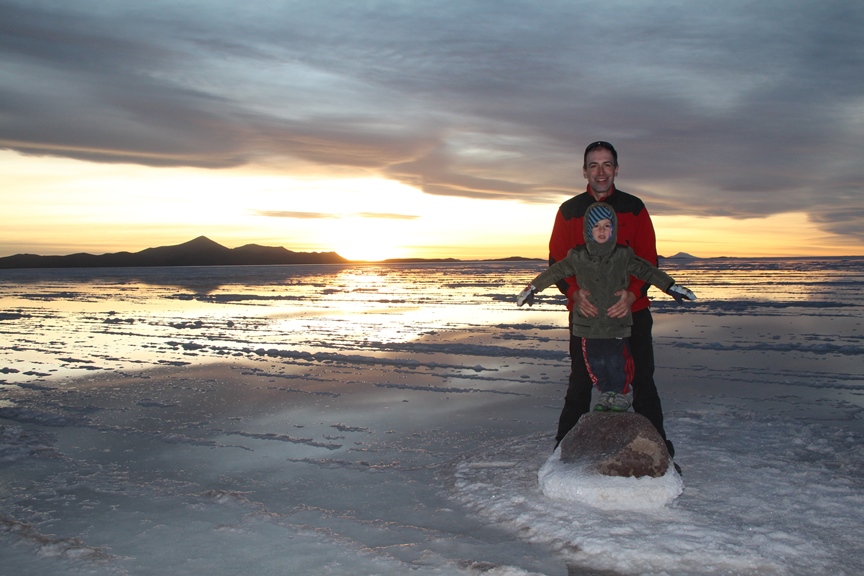
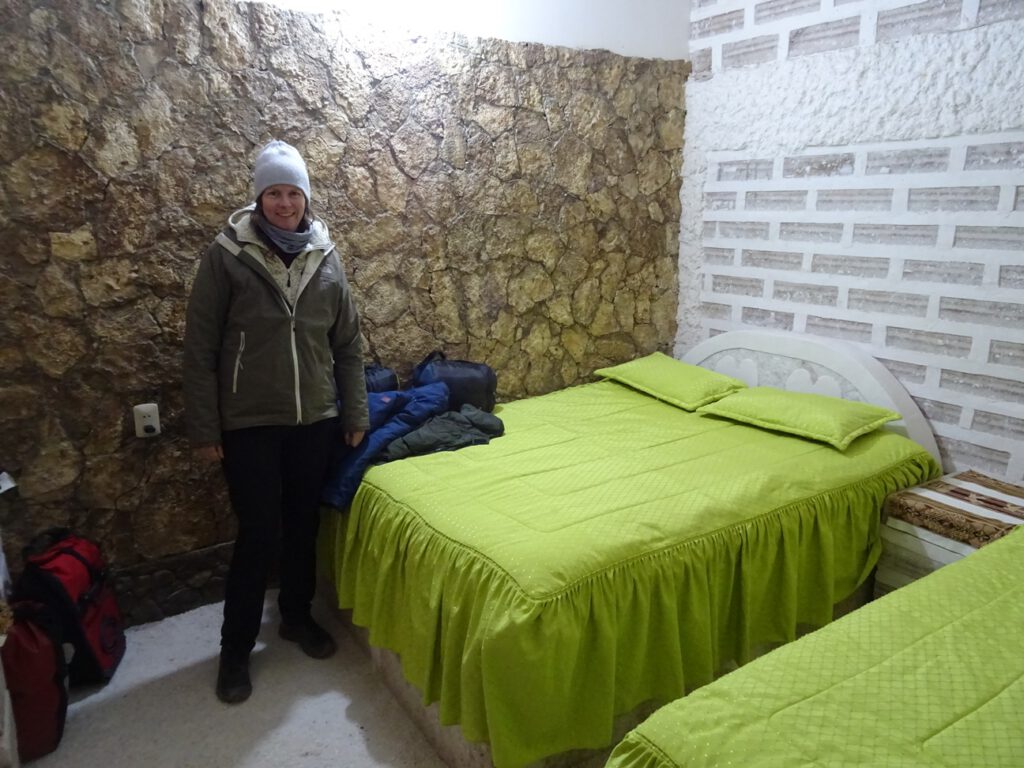
The next day we would start gaining altitude (we started at 3800 mts which is not bad) to visit all the lagoons. The green one, a very dark one, the still active Callejon Canapa volcano, etc. We saw many vicunas on the way.
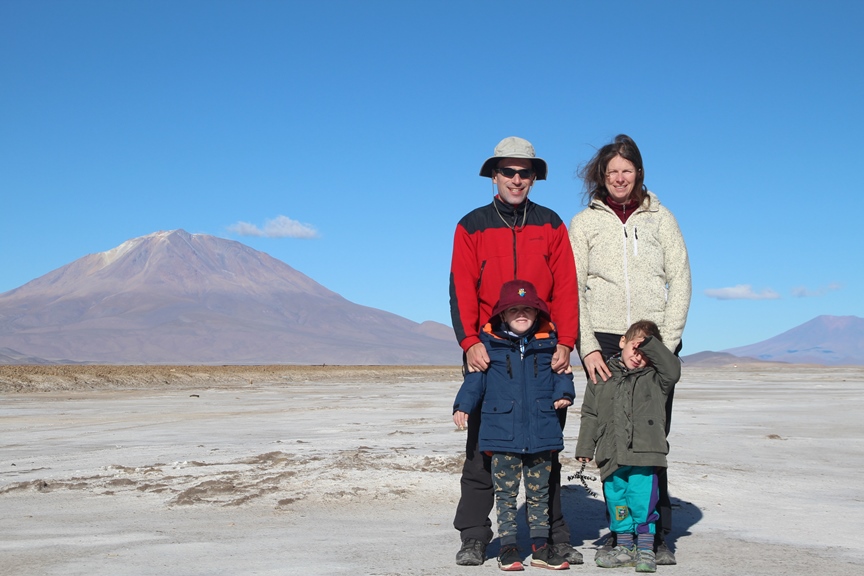
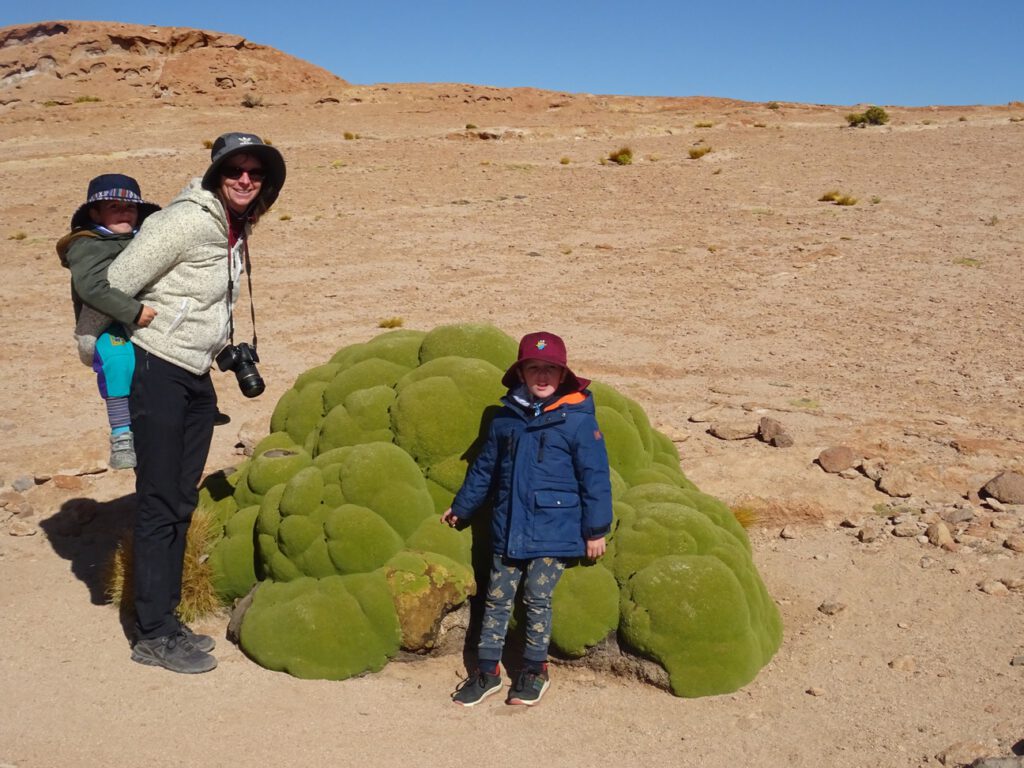
At lunch time we stopped in what was maybe my favorite spot, an area full of volcanic rocks eroded by the wind and sun making for vertical and narrow alleys in the middle of the desert. Here is the famous Stone Tree that makes this route known worldwide.
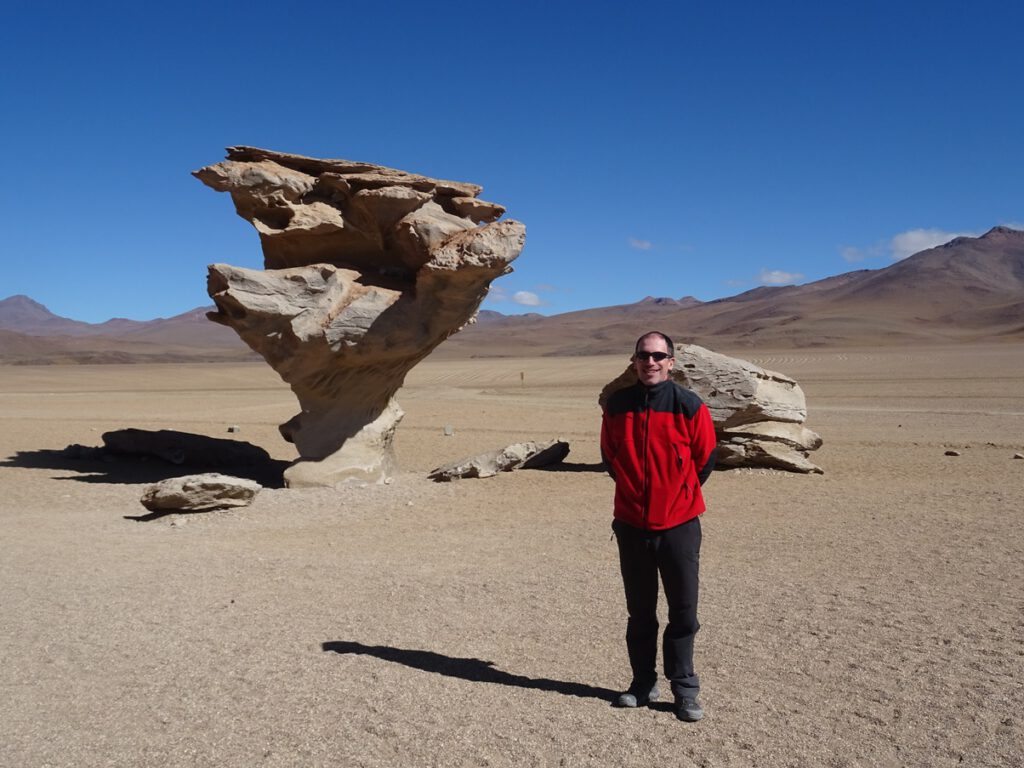
I was glad we were not cycling, as most of this area is very isolated and sandy. A health or mechanical issue could mean a lot of trouble.
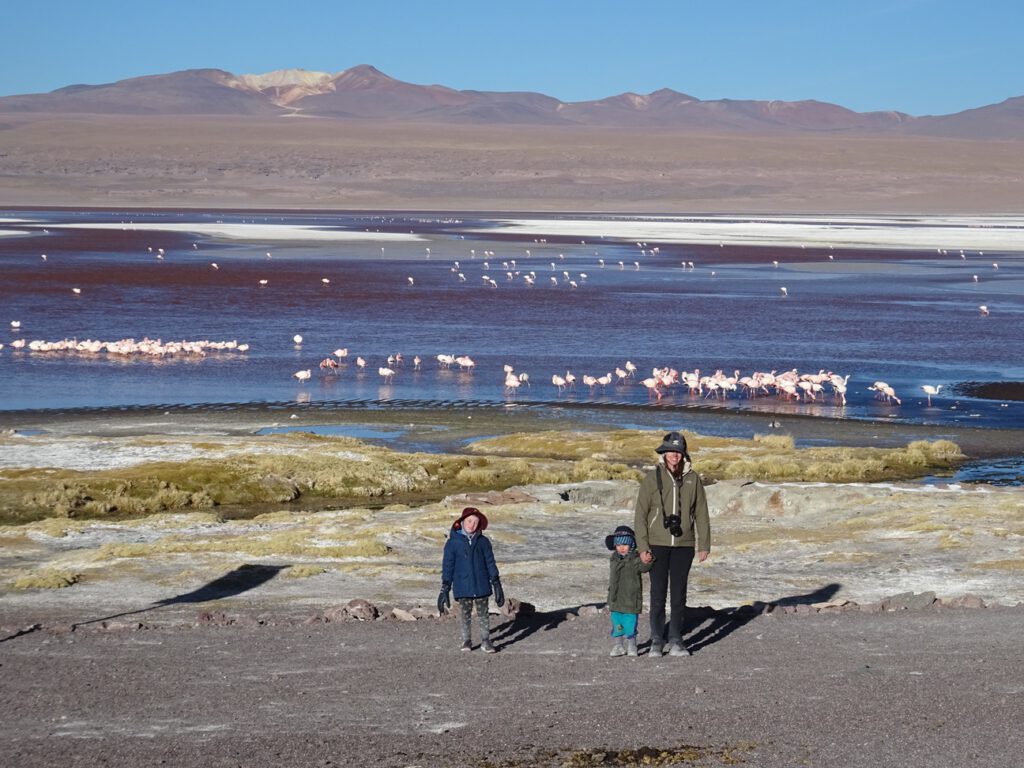
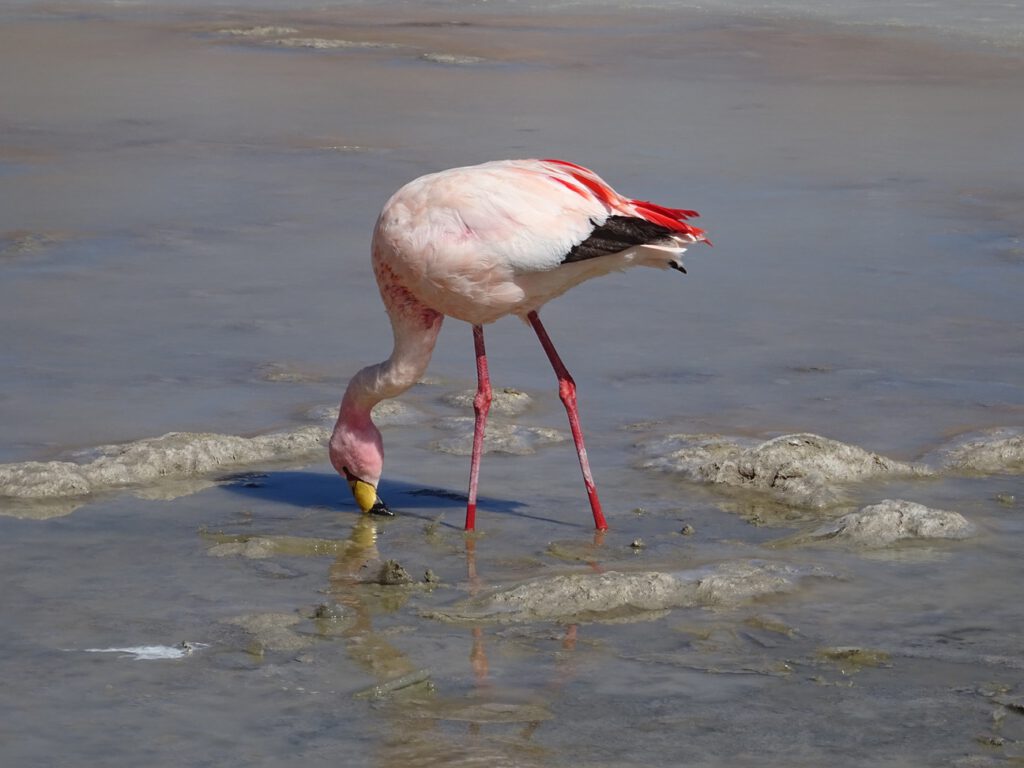
In the afternoon we visited the red lagoon, called like that because of the water colour due to the algae and full of flamingos. The kids did not enjoy it because it was really windy. We went to sleep in a hostel nearby, which was very cold and had of course no heating, but sleeping together with a lot of blankets did the trick.
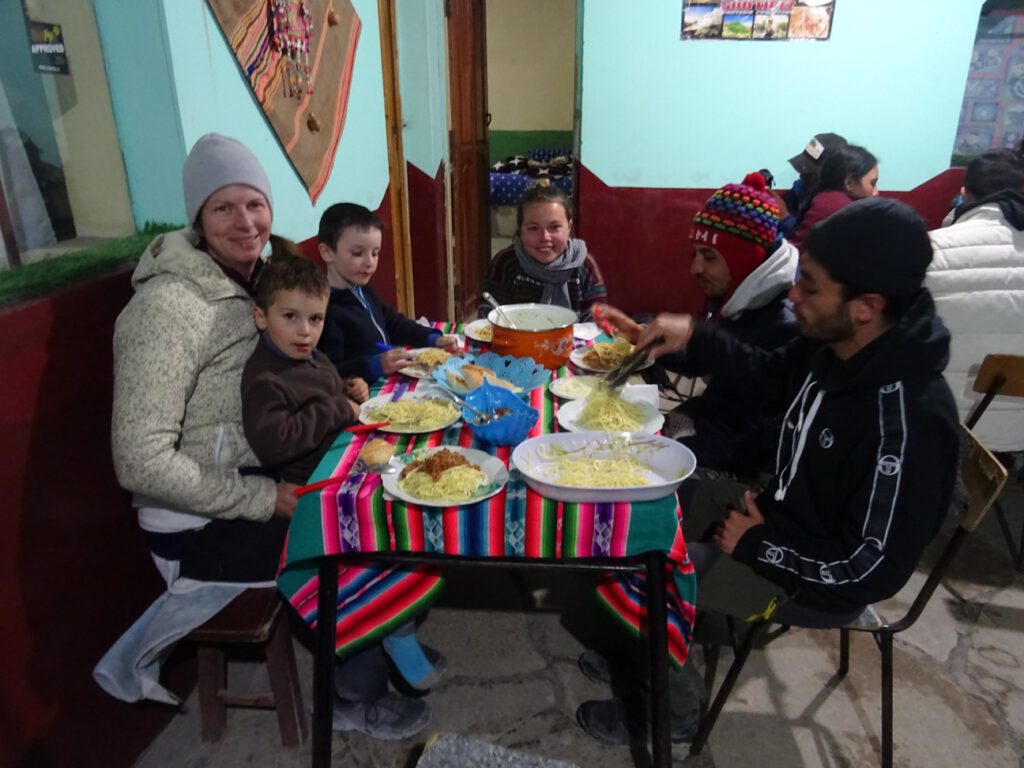
The next day we had to get up very early and leave in the darkness, because we were going to visit the geysers of Sol de Manana and a couple of hours after sunrise the wind starts to blow and you hardly see the steam coming out.
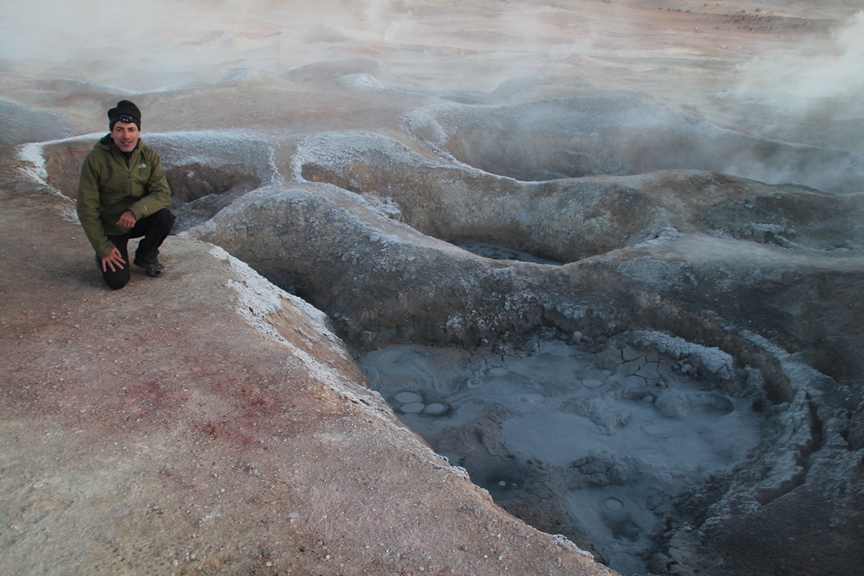
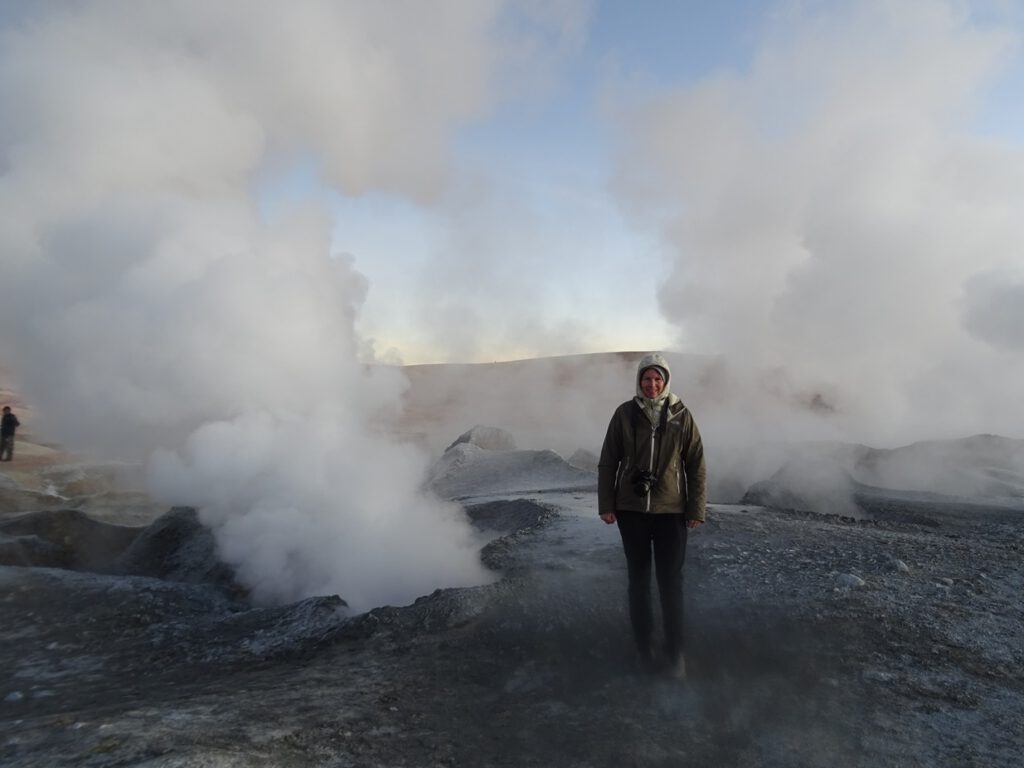
They are located at nearly 5000 mts altitude but nobody had issues. After the early morning the kids immediately fell sleep in the car. We then went to warm up at the thermal baths in Polque, very close to the Chilean border.
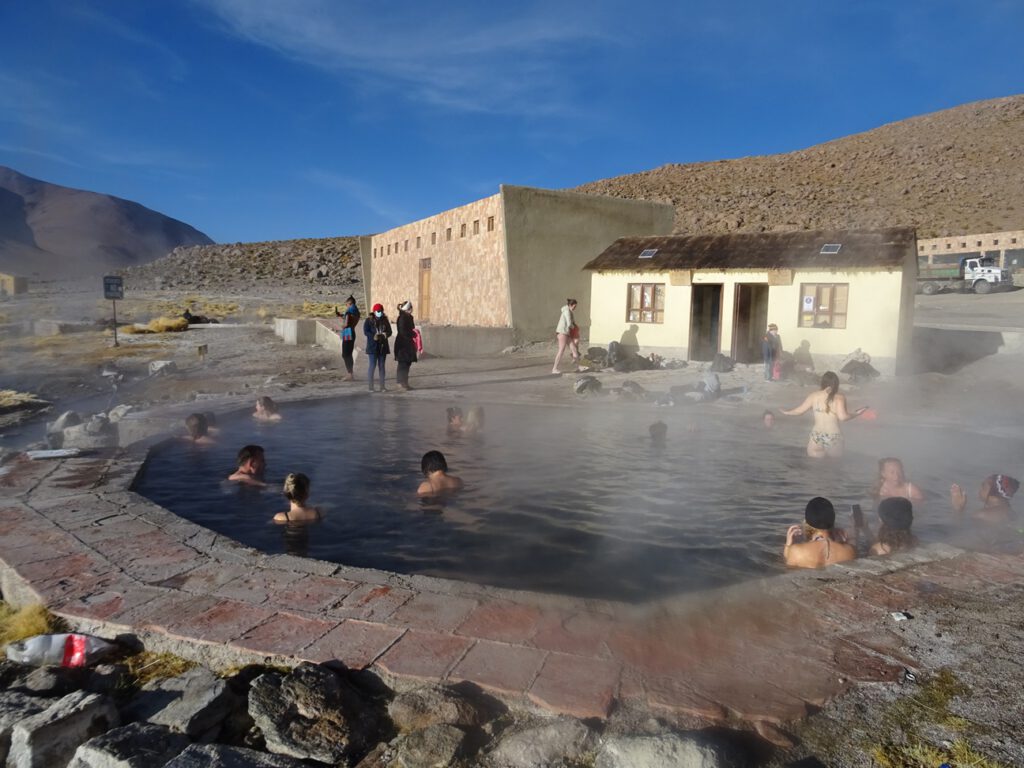
We then went to spend most of the day just driving back to Uyuni, while stopping for some sightseeing along the way: the “secret valley” with a nice lake hidden between volcanic rocks, the “little rome” made up of tall rock walls one could think were buildings and streets, etc.
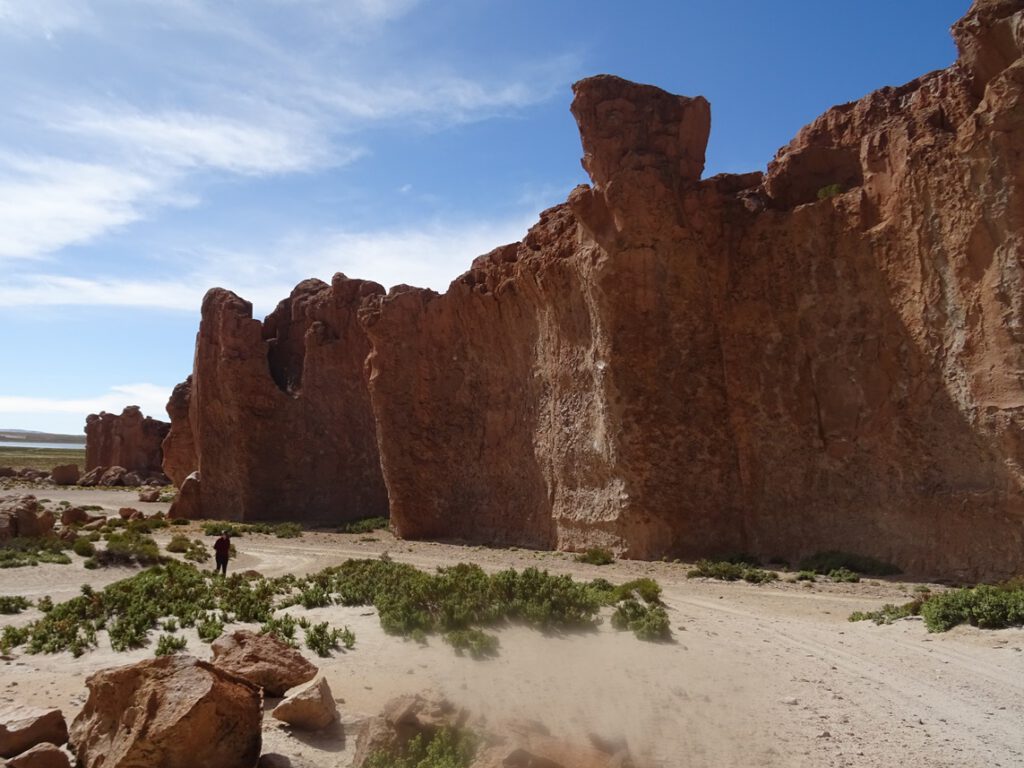
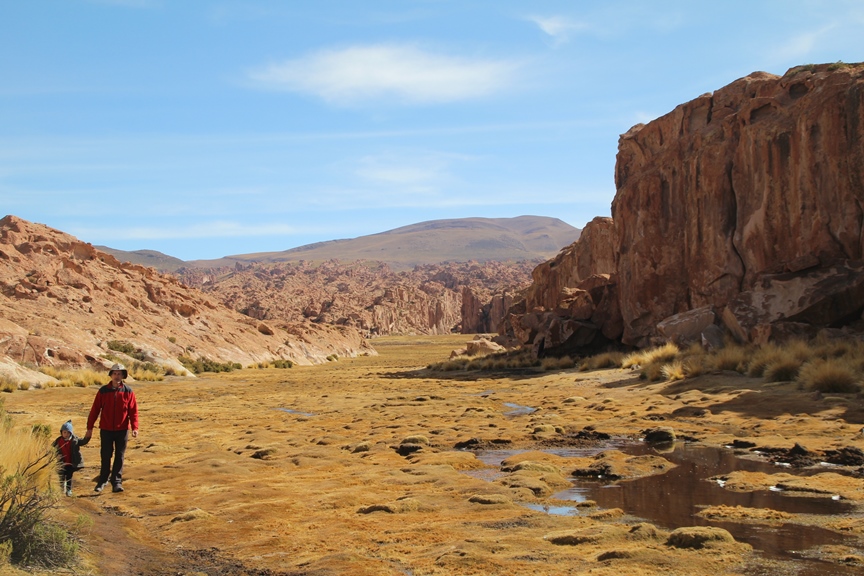
We arrived in Uyuni, tired but happy, just before sunset. The French guys wanted to take a bus to Potosi, while we would be cycling back to the Salar the next day.
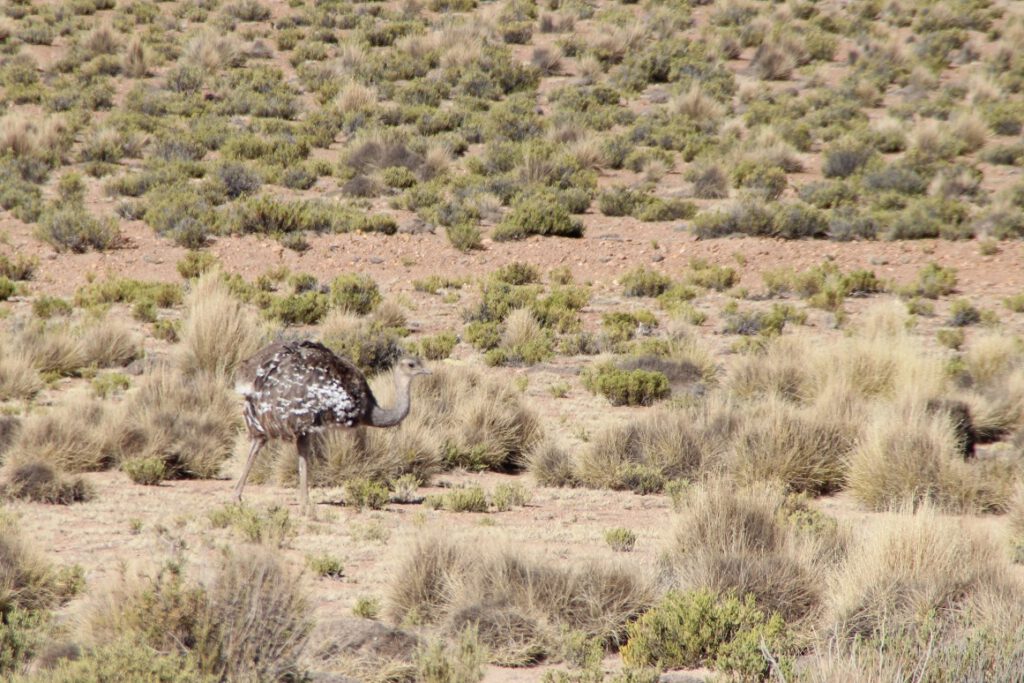
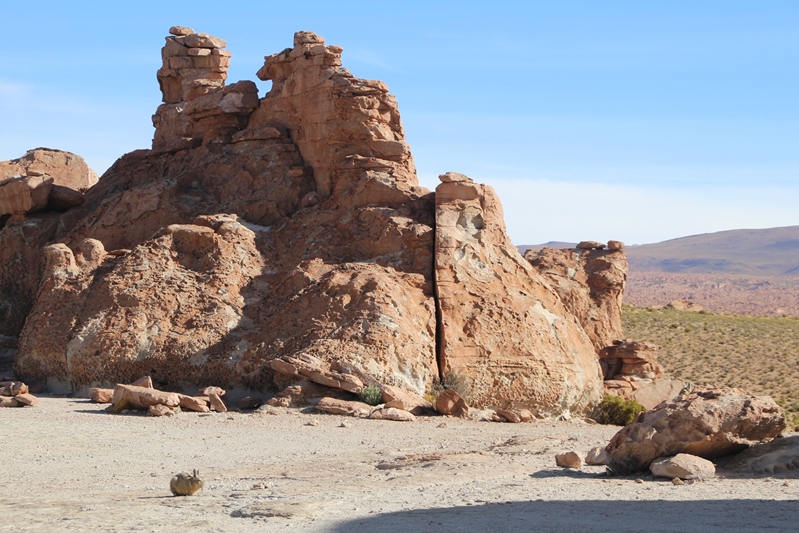
Remember you can receive notifications by email every time there is a new post just by subscribing on the box in the sidebar (or below if reading on a portable device).
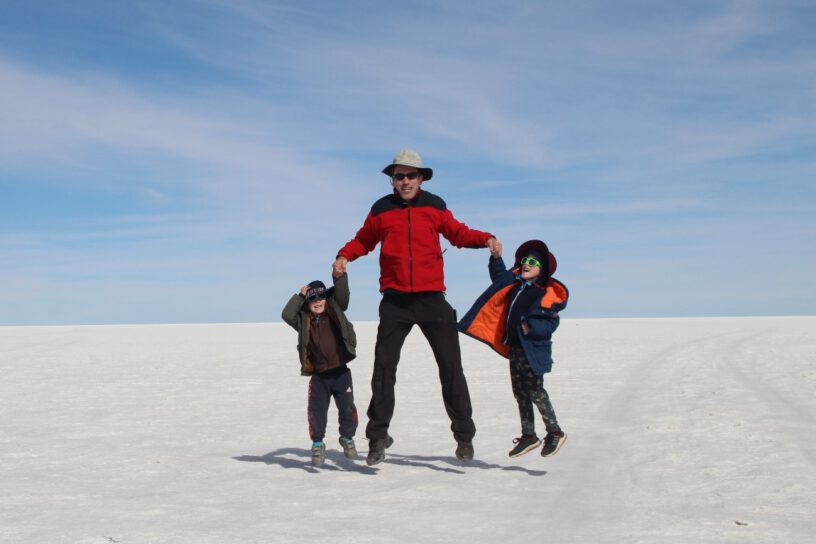
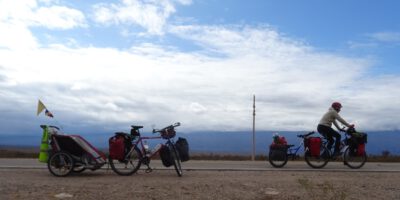
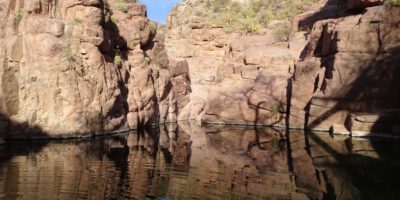
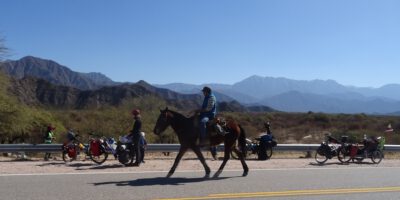
katherine
Que parajes!!! de ciencia fiction!!! la primera foto pense era nieve, por lo arropados que estan pero ha sido sal, ni que hablar del hotel, que maravilla, digno de visitar. Y los parajes deserticos? como dicen en espana… me quede flipando…. y en colores! (asi verdad?) .Cada sitio tiene su belleza y este va ganando!! Saludos viajeros.. y que postales familiares tan bonitas…